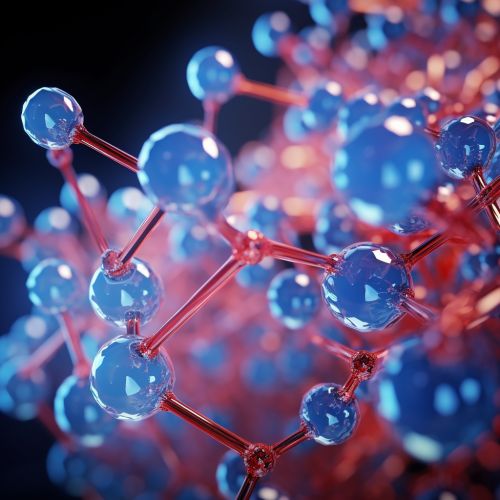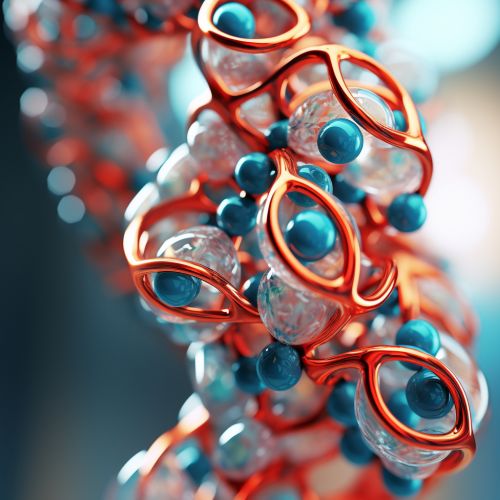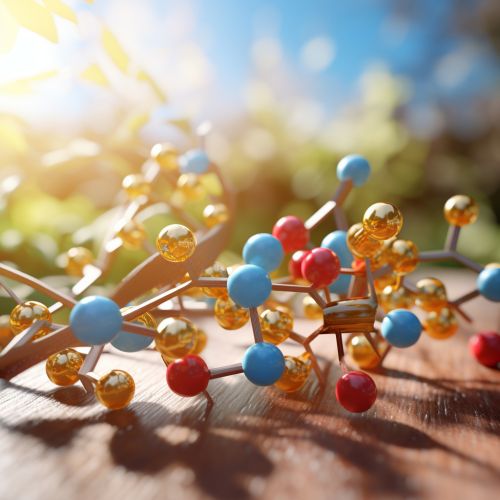Enzyme
Introduction
Enzymes are biocatalysts that speed up chemical reactions in living organisms. They are large proteins that bind to molecules and alter them in specific ways. They are essential for life and serve a wide range of important functions in the body, such as aiding in digestion and metabolism.


Structure of Enzymes
Enzymes are made up of amino acids that are linked together in a linear chain. The chain is then folded into a unique shape that allows the enzyme to perform its function. The unique shape is determined by the sequence of amino acids. The structure of an enzyme can be broken down into four levels: primary, secondary, tertiary, and quaternary.


Primary Structure
The primary structure of an enzyme refers to the sequence of amino acids that make up the polypeptide chain. The amino acids are linked by peptide bonds, a type of covalent bond formed between the carboxyl group of one amino acid and the amino group of another.
Secondary Structure
The secondary structure refers to the folding of the amino acid chain into alpha helices and beta sheets. These structures are held together by hydrogen bonds between the backbone atoms of the amino acids.
Tertiary Structure
The tertiary structure is the overall three-dimensional shape of the enzyme. It is formed by the further folding of the alpha helices and beta sheets. This structure is stabilized by various types of bonds and interactions, including hydrogen bonds, ionic bonds, and hydrophobic interactions.


Quaternary Structure
Some enzymes consist of more than one polypeptide chain, and the quaternary structure refers to the arrangement of these chains. The chains, known as subunits, can be identical or different.
Function of Enzymes
Enzymes function as catalysts, substances that speed up chemical reactions without being consumed in the process. They do this by lowering the activation energy required for the reaction to occur. Enzymes are highly specific, meaning they only catalyze certain reactions.
Mechanism of Action
Enzymes work by binding to their substrate, the molecule they will act on, at a specific region called the active site. The active site is a pocket or groove on the enzyme's surface that fits the substrate. The binding of the substrate to the enzyme causes a change in the enzyme's shape, allowing it to perform its function.


Regulation of Enzyme Activity
The activity of enzymes can be regulated in several ways. This is important because it allows the cell to control the rate of chemical reactions. Regulation can occur through feedback inhibition, allosteric regulation, covalent modification, and enzyme compartmentalization.
Feedback Inhibition
In feedback inhibition, the product of a reaction inhibits the enzyme that produces it. This is a form of negative feedback that prevents the cell from wasting resources by producing more of a substance than it needs.
Allosteric Regulation
In allosteric regulation, a molecule binds to an enzyme at a site other than the active site. This binding changes the shape of the enzyme and alters its activity. Allosteric regulation can either inhibit or activate an enzyme.


Covalent Modification
Covalent modification involves the addition or removal of a chemical group, such as a phosphate group, to or from an enzyme. This can change the enzyme's activity.
Enzyme Compartmentalization
Cells can regulate enzyme activity by compartmentalizing enzymes within organelles. This allows the cell to control where and when a particular reaction occurs.
Role in Metabolism
Enzymes play a crucial role in metabolism, the set of chemical reactions that occur in living organisms to maintain life. They are involved in both the breakdown of substances (catabolism) and the building up of substances (anabolism).


